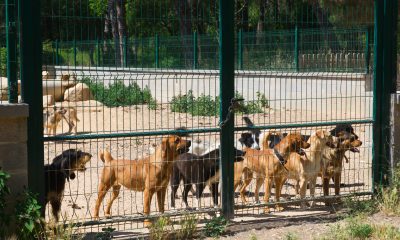Safety & Emergency
The Plight of Animals in Spain
Challenges and Efforts for Protection
Spain, known for its rich biodiversity and picturesque landscapes, is home to a wide variety of animal species.
However, many of these animals face significant challenges, including habitat loss, climate change, pollution, and human activities.
The suffering of animals in Spain encompasses both wild and domesticated species, with various organizations and policies in place striving to mitigate these issues.
Wildlife: Struggling for Survival
Iberian Lynx:
The Iberian lynx, once widespread across the Iberian Peninsula, is now one of the most endangered felines in the world.
Habitat destruction, road accidents, and a decrease in prey such as rabbits have severely impacted its population.
Conservation efforts have shown some success, but the species remains vulnerable.
Spanish Imperial Eagle:
Another endangered species, the Spanish imperial eagle, faces threats from habitat loss, poisoning, and collisions with power lines.
Conservation programs focus on habitat protection, breeding programs, and reducing mortality from human activities.
Marine Life:
The Mediterranean Sea and Atlantic Ocean, bordering Spain, are home to diverse marine species.
Overfishing, pollution, and climate change have caused declines in fish populations, marine mammals, and coral reefs.
Notable affected species include the loggerhead turtle and various types of cetaceans, such as dolphins and whales.
Domestic Animals: Issues of Welfare
Bullfighting:
Bullfighting, a traditional yet controversial practice in Spain, involves significant animal suffering.
Bulls used in these events often endure severe stress and physical harm.
While there is a cultural aspect to bullfighting, increasing public awareness and animal rights activism are pushing for changes and, in some regions, bans on the practice.
Stray Dogs and Cats:
Spain has a substantial population of stray dogs and cats, especially in urban areas.
These animals often suffer from malnutrition, disease, and lack of shelter.
Animal welfare organizations work tirelessly to rescue, rehabilitate, and rehome these animals, but the issue remains pervasive.
Farm Animals:
Intensive farming practices can lead to poor living conditions for farm animals such as pigs, chickens, and cattle. Issues include overcrowding,
lack of access to the outdoors, and inadequate veterinary care.
Advocacy for better welfare standards and more humane farming practices is ongoing.
Human Impact and Environmental Threats
Habitat Destruction:
Urbanization, agriculture, and infrastructure development lead to habitat loss and fragmentation.
This impacts not only large mammals but also smaller species like amphibians, reptiles, and birds.
Climate Change:
Rising temperatures and changing weather patterns disrupt ecosystems.
Species that cannot adapt or migrate are at risk.
For example, amphibians are particularly vulnerable to changes in water availability and temperature.
Pollution:
Pollution from agricultural runoff, industrial waste, and plastic litter affects both terrestrial and marine ecosystems.
Animals ingest or become entangled in plastic waste, suffer from toxic chemicals, and experience degraded habitats.
Conservation Efforts and Legislation
Protected Areas:
Spain has established numerous national parks, nature reserves, and protected areas to safeguard habitats and species.
Notable examples include Doñana National Park and Sierra de Guadarrama National Park.
Legislation:
The Spanish government has enacted laws to protect endangered species and regulate hunting.
The EU Habitats Directive and Birds Directive also play crucial roles in conservation efforts.
NGOs and Activism:
Non-governmental organizations such as WWF Spain, SEO/BirdLife, and local animal shelters are at the forefront of conservation and animal welfare efforts.
They engage in habitat restoration, rescue operations, public education, and lobbying for stronger animal protection laws.
Public Awareness and Education:
Increasing public awareness through education campaigns, documentaries, and media coverage is crucial for fostering a culture of respect and care for animals.
Schools, community groups, and social media play vital roles in these efforts.
Conclusion
The suffering of animals in Spain is a multifaceted issue involving wildlife, domestic animals, and the broader impact of human activities.
While significant challenges remain, ongoing conservation efforts, legislative measures, and growing public awareness provide hope for improving the welfare of animals across the country. Protecting Spain’s rich biodiversity and ensuring the humane treatment of all animals require continuous dedication and collaboration from all sectors of society.
